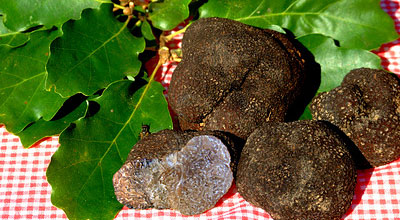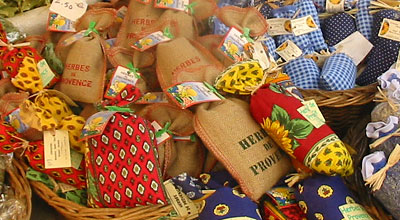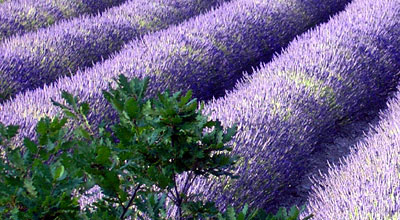The regional products
 Olives and olive oil
Olives and olive oil
The olive tree - symbol of the Mediterranean - was imported by the greek some 2500 years ago.
It can live for several centuries and starts to give fruit at the age of eight, reaching full maturity by the age of twenty.
Olives are traditionally gathered by hand or combs from November to January. The largest are conserved for eating whilst the smallest are pressed at the mill to give "virgin olive oil". 5 kg (11Pb) of olives makes 1 litre (1,8 pints) of oil.
 Truffles
TrufflesThe black truffle, the same as the Périgord truffle is recognizable by its strong wild perfume.
Its development requires 3 essential elements : earth rich in limestone, a Mediterranean climate and a welcoming tree (generally oak). It is collected during winter at the feet of oak trees with the help of a well-trained dog. The "truffle hound" scratches the earth to show where the truffle is hidden, leaving its owner to free the "Black Diamond" with a special hook called a "Faiji". The cultivation of truffles spreads over 15 communities in the "Vaucluse" and 68 in the "Drôme Provençale".
 Aromatics Plants
Aromatics PlantsBe it wild or cultivated, each plant has its own special use: gastronomic, herbal tea, perfume, medicine...
They are widely used in Provencal cooking. Thyme or "Farigoule" in Provencal accompanies meat dishes whilst fennel or sage are delicious with fish. Savory "pebre d'ase" is used to season goat's cheese. But there is also romary, verbena, coriander, basil (pistou)...
Anise and mint are also cultivated to make aperitif drinks.
 Lavender
LavenderEvery summer the plateaus and hills of Provence are coloured in blue by fields of lavender.
The cultivation of lavender dates from the last century but its properties have been know since antiquity, it has even been used during the middle-ages as a disinfectant.
Collected by hand in the past, the harvest is now completely mechanized. Dried for a few days, the flowers then leave for the distillery where the essential oil is extracted. 120 kg (20 stone) of flowers makes 1 kg (2.2 Pb)of essential oil.
Lavandin plant, a hybrid of lavender, is becoming more and more popular because it produces twice as much oil.
Lime
The Baronnies region is incontestably the last lime tree stronghold in France (90% of the national production). It is cultivated for its flowers wich make a tea well know for its sedative properties.
The flowers are gathered at the end of June entirely by hand, perched on a ladder with a white linen sack hooked to the ladder or the bough. After the harvest the flowers are placed in the shade to conserve their qualities before being sold at the Lime Festival of Buis-les-Baronnies the first Wednesday of July.
Nougat
This sweet with the perfume of Provence, a marriage of honey and almonds appeared for the first time in Montélimar at the end of the XVI century.
Honey and sugar are melted and cooked in mixers then added to beaten egg whites. It is only at the end that the almonds are added and the mixture is then poured into moulds.
Nougat can be industrally or hand-made, but must include at least 30% of almonds to merit the name "Nougat de Montélimar".